England - Sep 18 - The Battle of Hastings
|
|
One of the places I just HAD to visit on our England trip was the site of the Battle of Hastings.
The Battle of Hastings was fought on 14 October 1066 between the Norman-French army of William, the Duke of Normandy, and an English army under the Anglo-Saxon King Harold Godwinson, beginning the Norman conquest of England. It took place approximately 7 miles northwest of Hastings, close to the present-day town of Battle, East Sussex, and was a decisive Norman victory.
Why is Hastings considered one of the most influencial battles in history, at least for western civilization? My favorite historian, Paul Johnson, says: "Thus William did not so much conquer England as save it from disintegration. This is what made Hastings one of the truly conclusive battles of history."
|
| |
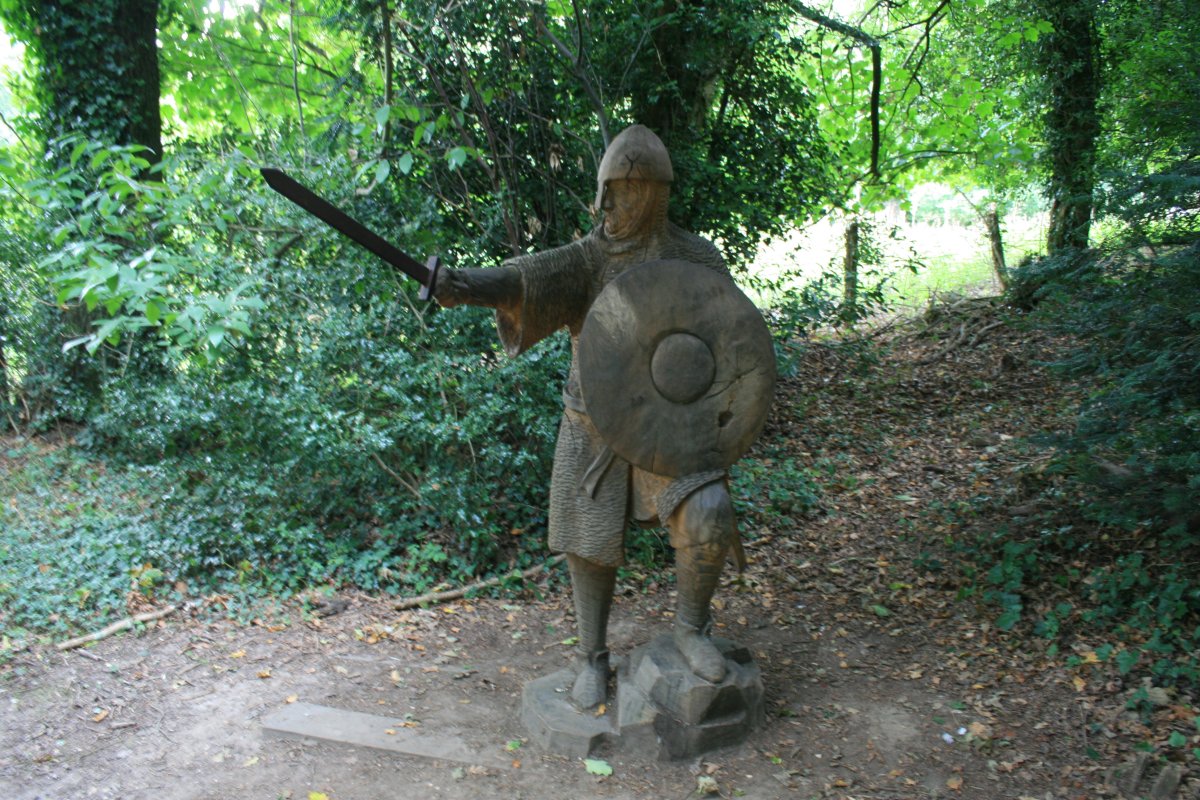 |
|
| We arrived in the late afternoon and didn't have a lot of time. We checked out the small museum and watched a short film. There is a trail which goes around the battlefield, which isn't very big, so I was able to walk it counter-clockwise before everything closed. |
| |
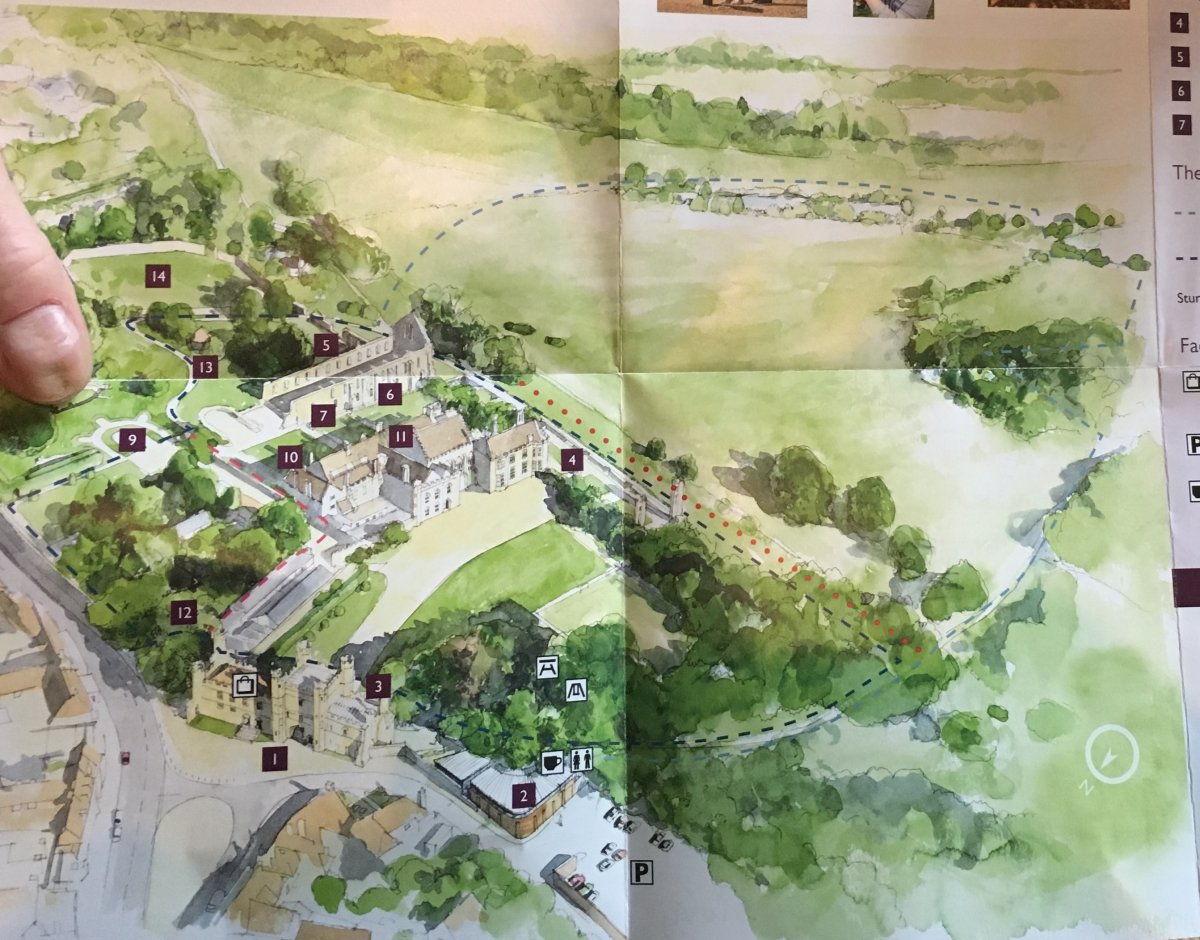 |
|
|
I start the trail. Right away I encountered sheep! Here I'm looking east across the battlefield.
|
| |
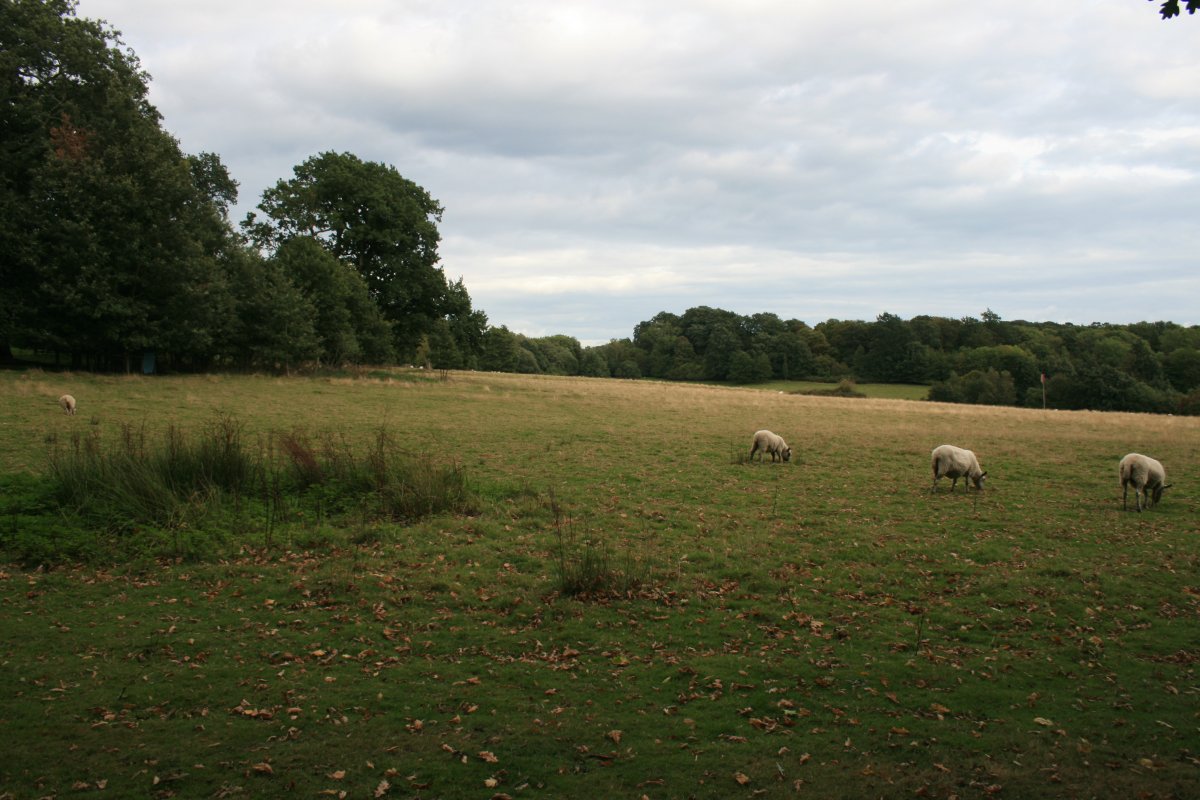 |
|
| Now I'm looking north. The exact numbers present at the battle are unknown; modern estimates are around 10,000 for William and about 7,000 for Harold. Harold had the high ground, where those buildings are now located. So William had the disadvantage of attacking uphill. |
| |
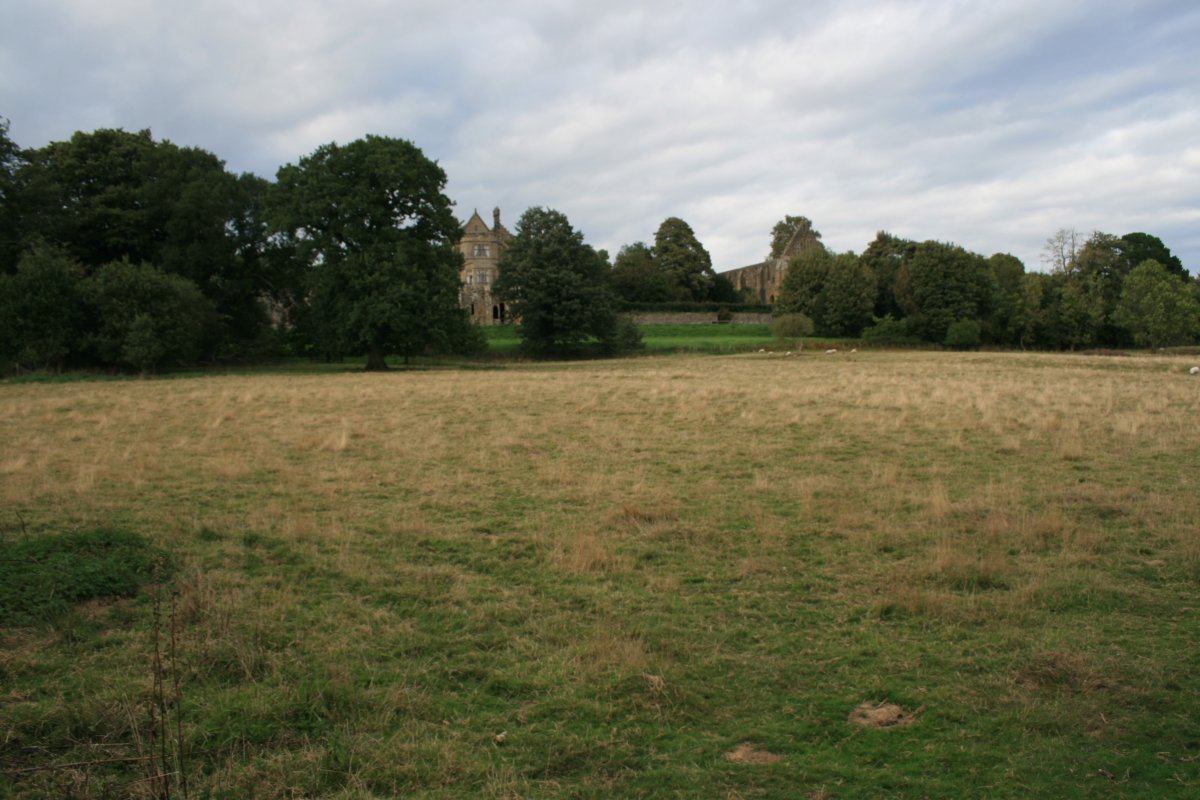 |
|
|
Every so often were these carved wooden soldiers depicting how the soldiers looked back in 1066.
|
| |
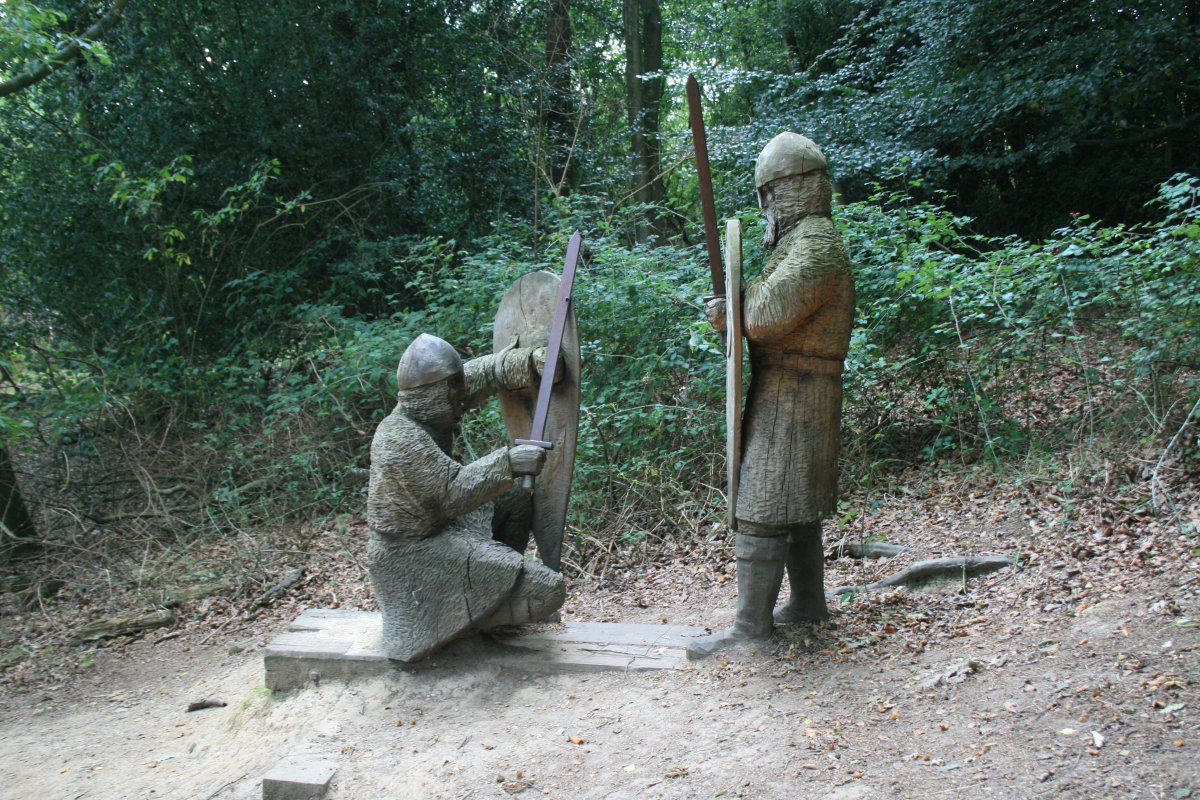 |
|
| Very well done placards were also placed periodically along the trail. The English are good at placarding. Note the painting in the lower right hand corner. This is the famous "Bayeux Tapestry" which depicts the events leading up to the Norman conquest of England. Lynnette and I saw the tapestry at the Norman town of Bayeux two years ago. |
| |
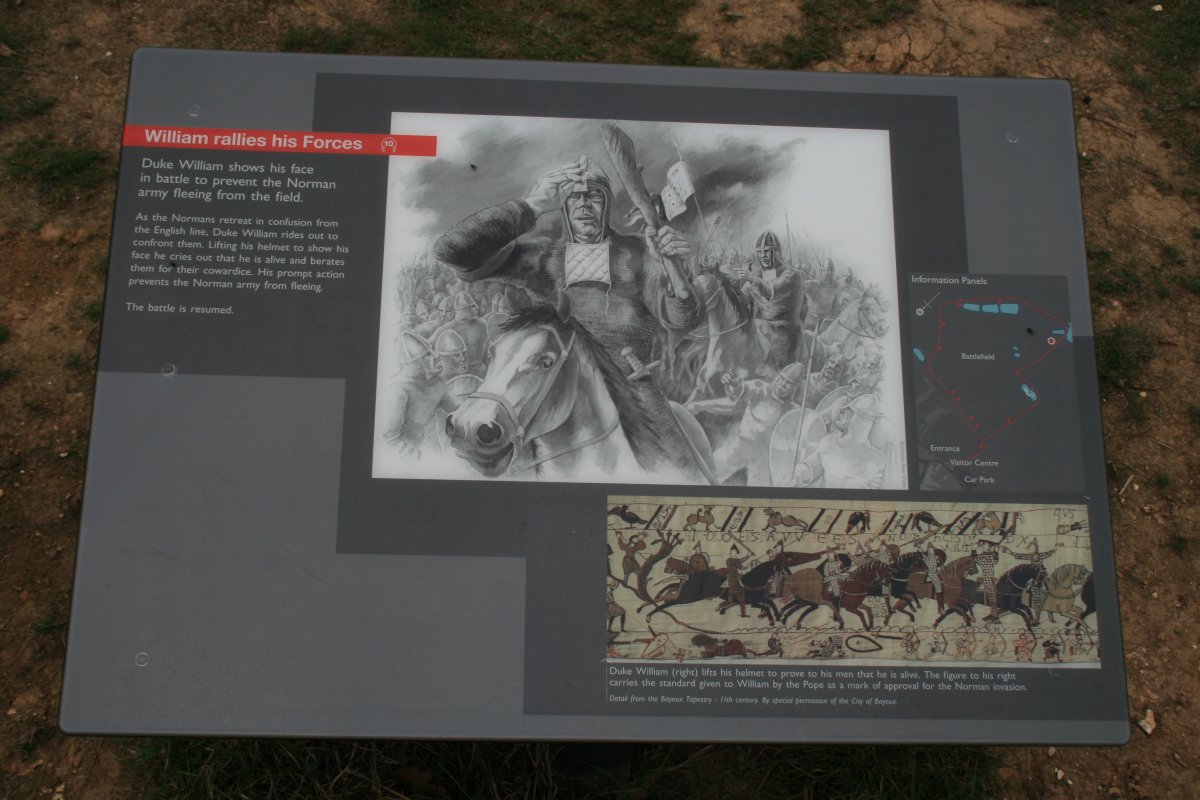 |
|
| William had cavalry; Harold did not. |
| |
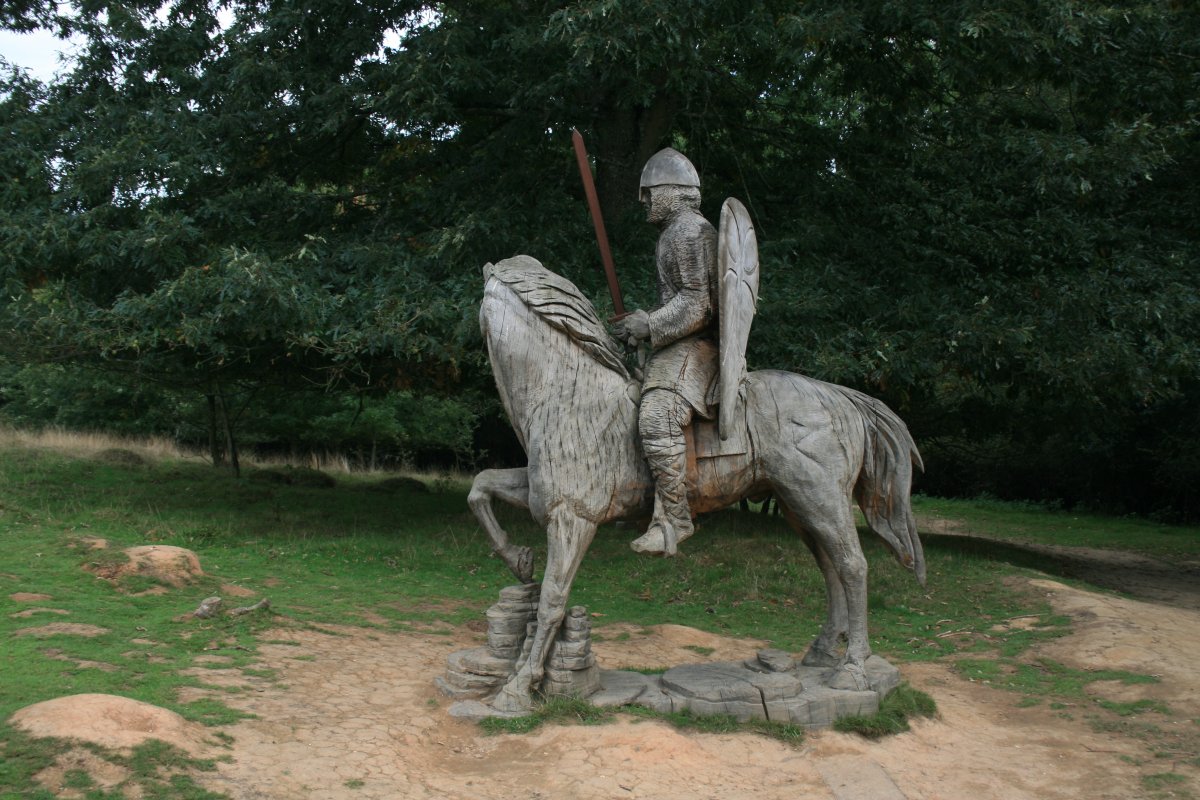 |
|
| Still looking north up the hill. This is where William's forces started from. |
| |
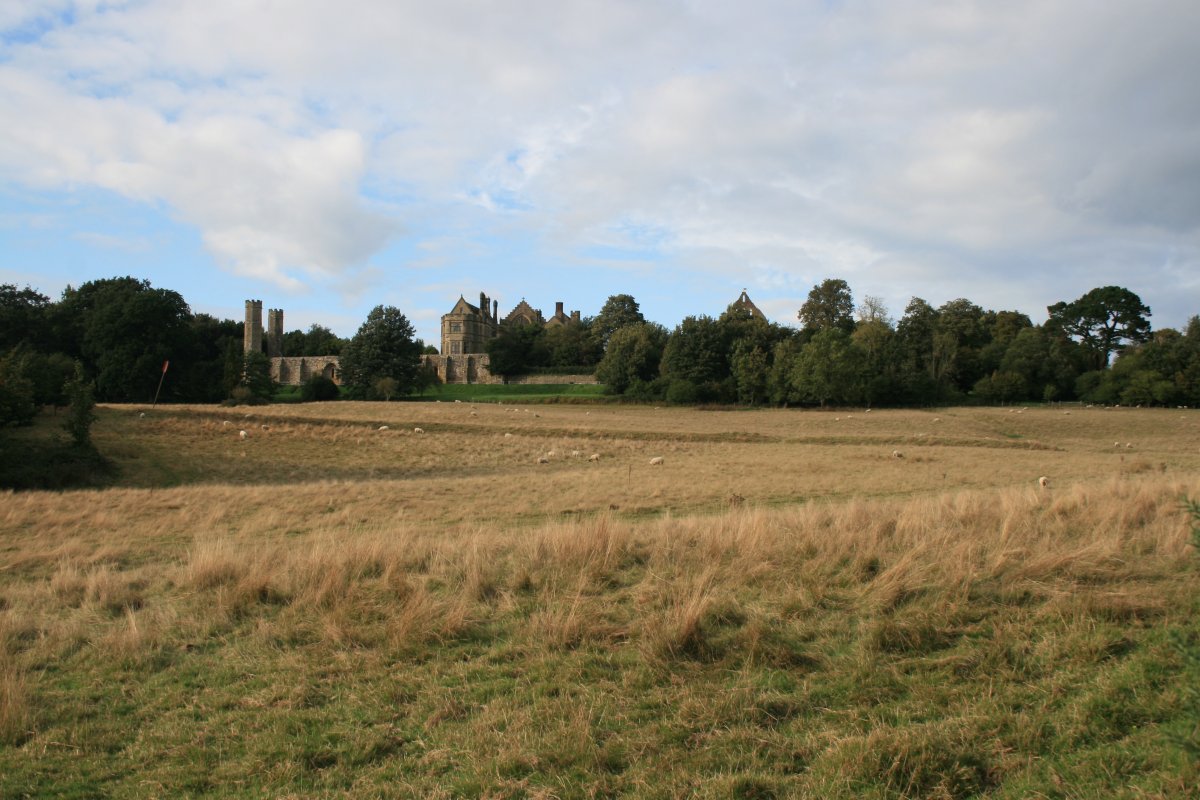 |
|
|
Now I'm moving to the western side of the battlefield. The sheep never even looked up as I walked by. I did have to watch where I stepped.
|
| |
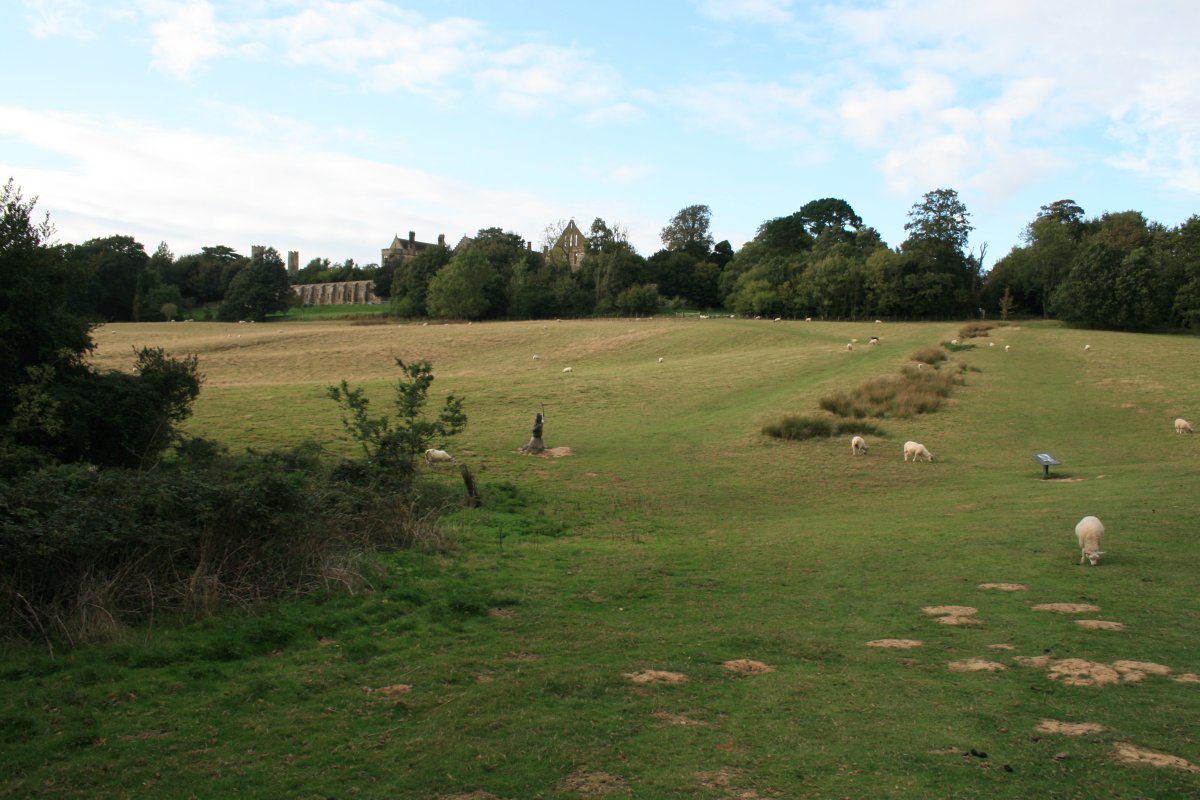 |
|
| William's archers were players in the battle. |
| |
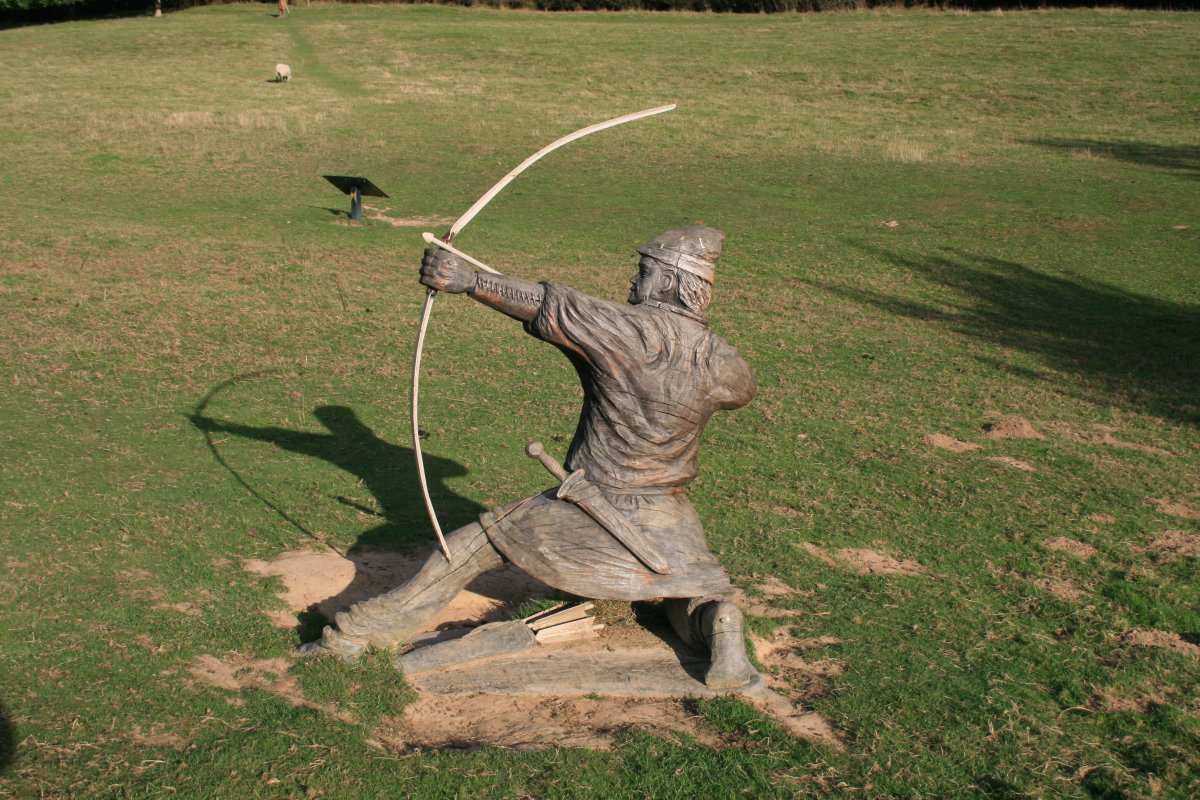 |
|
|
The ruins of the monks' dormitory at Battle Abbey. Battle Abbey was founded by William at the site of the battle. According to 12th-century sources, William made a vow to found the abbey, and the high altar of the church was placed at the site where Harold had died.
|
| |
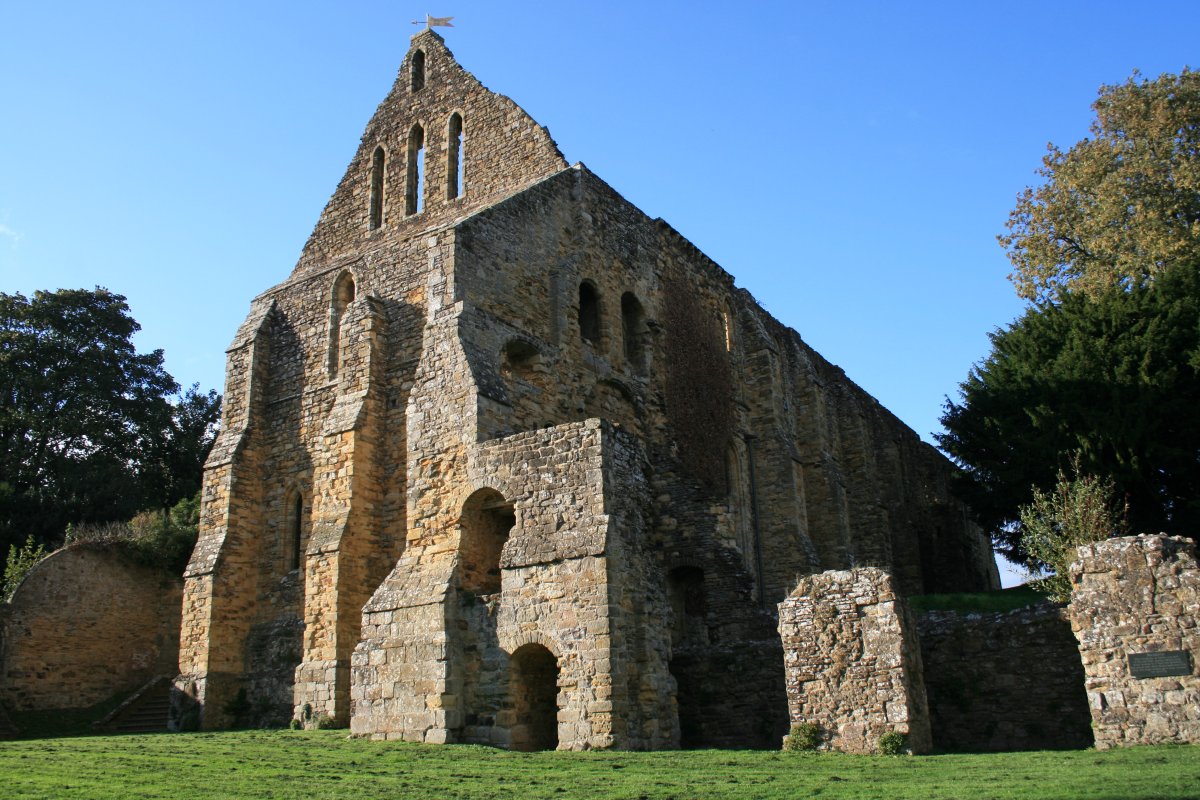 |
|
| Now looking south down the hill where the Norman's charged up. For a battle of such historical importance, it is pretty amazing how simple the battle was and how small the battlefield is. |
| |
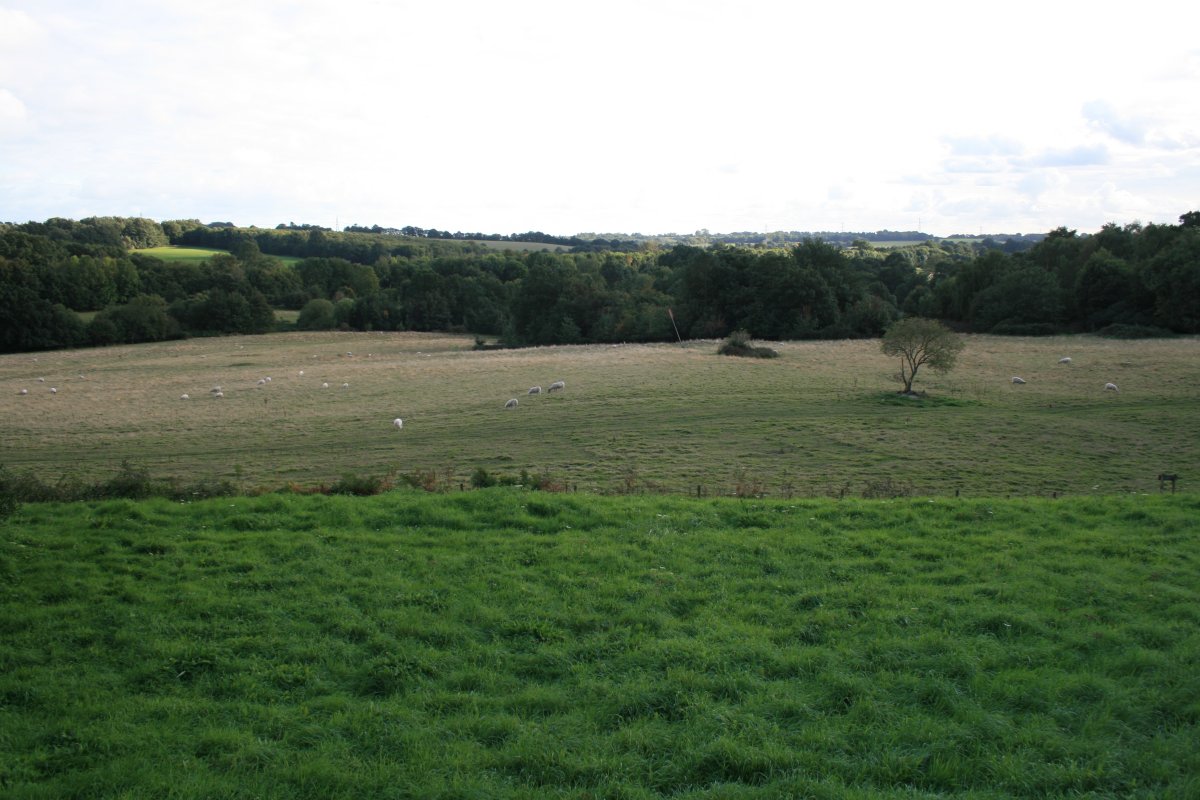 |
|
| Another Abbey building. |
| |
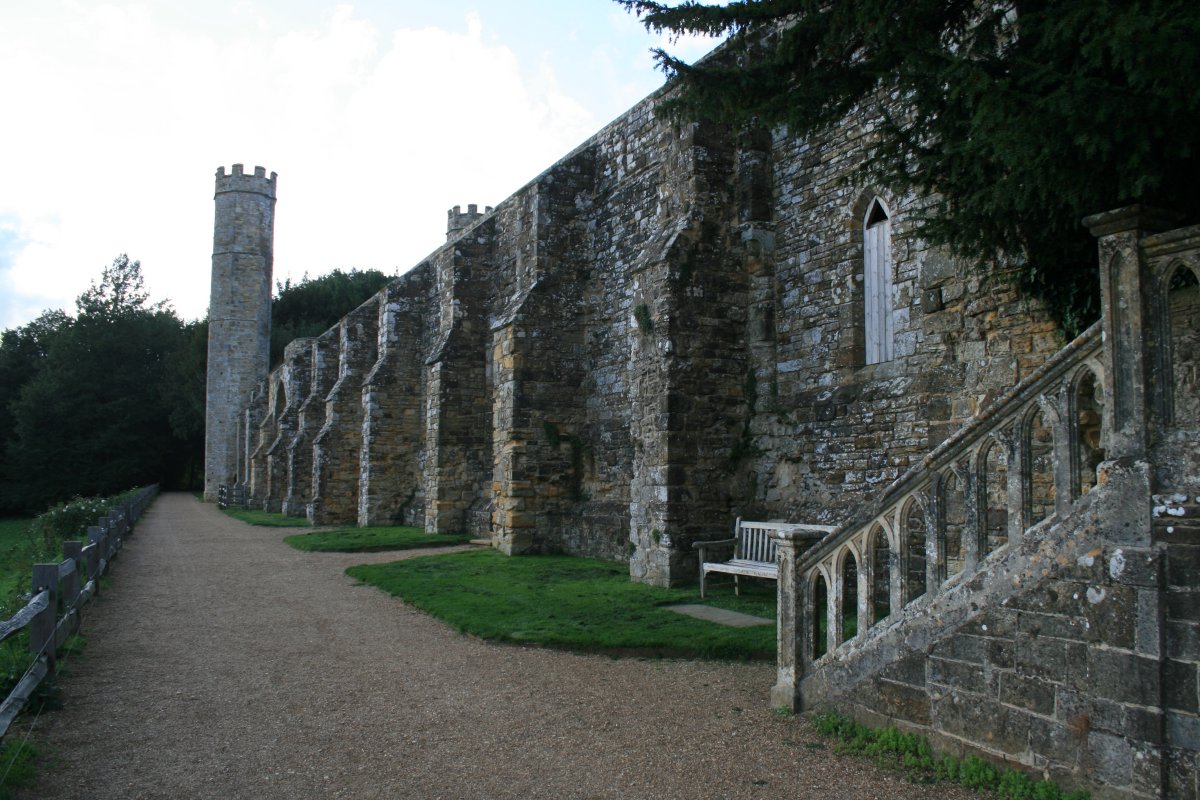 |
|
| This is the spot where Harold, the English king, was killed by an arrow in the eye which was the beginning of the end for the English forces. Leaderless, they began to collapse. |
| |
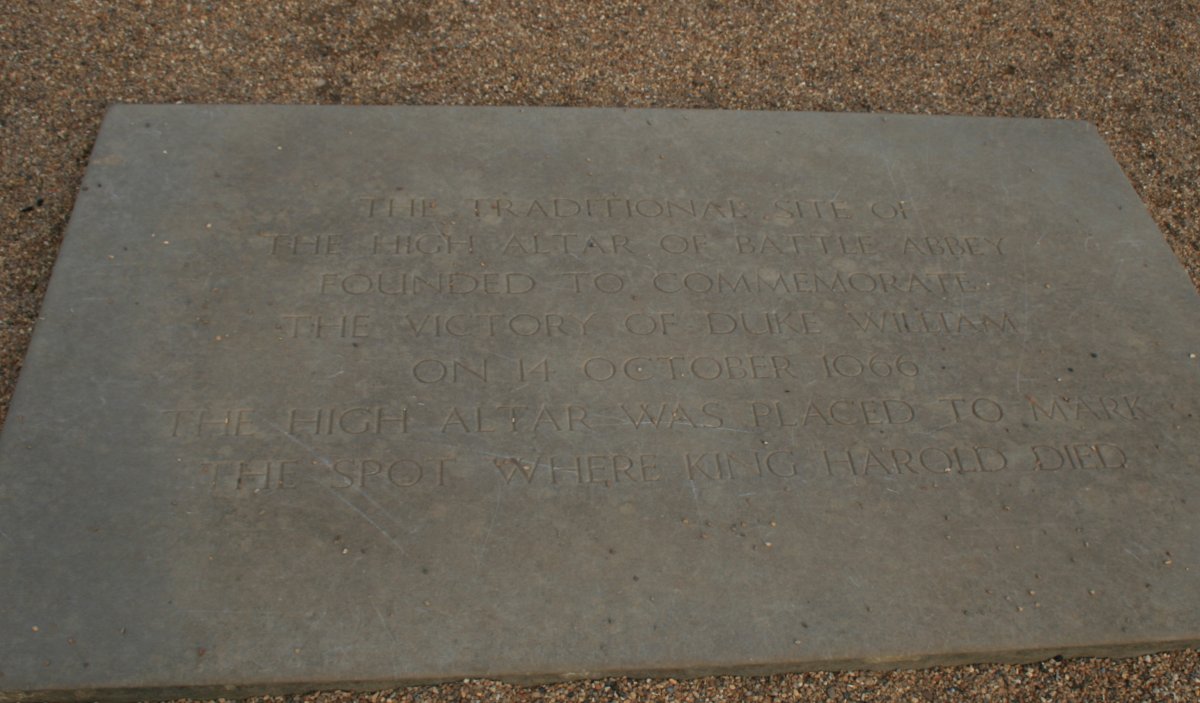 |
|
|
The high alter of the church was located at the spot where Harold was killed. The gravel area outlines the church.
|
| |
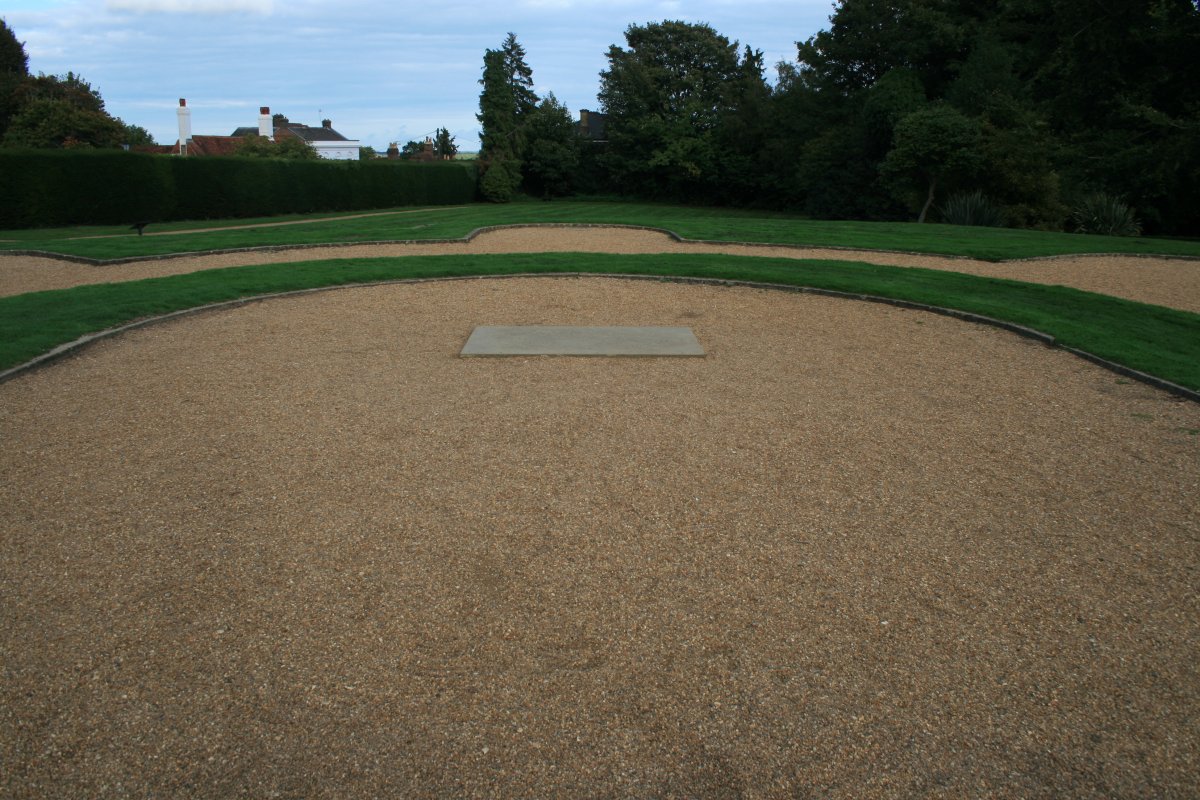 |
|
| Looking back at some of the Abbey buildings. |
| |
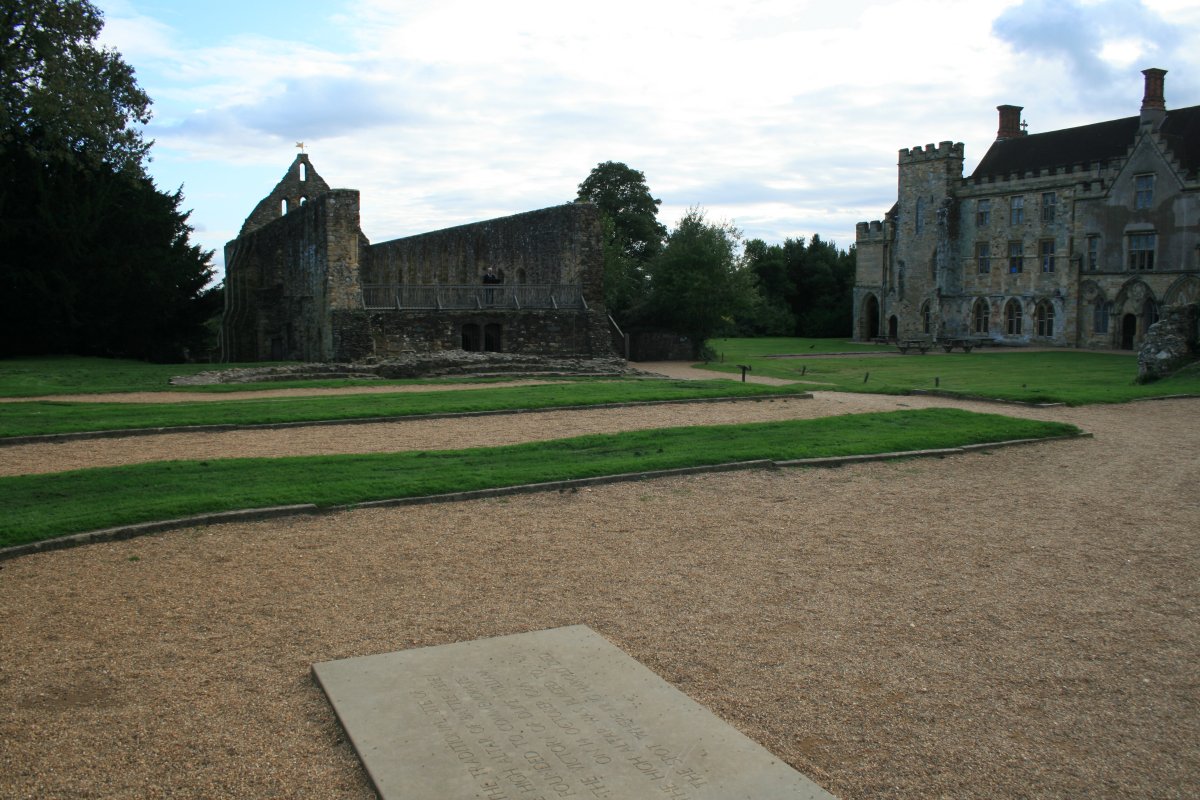 |
|
|
Walking along the Abbey wall with the town of Battle outside the walls.
|
| |
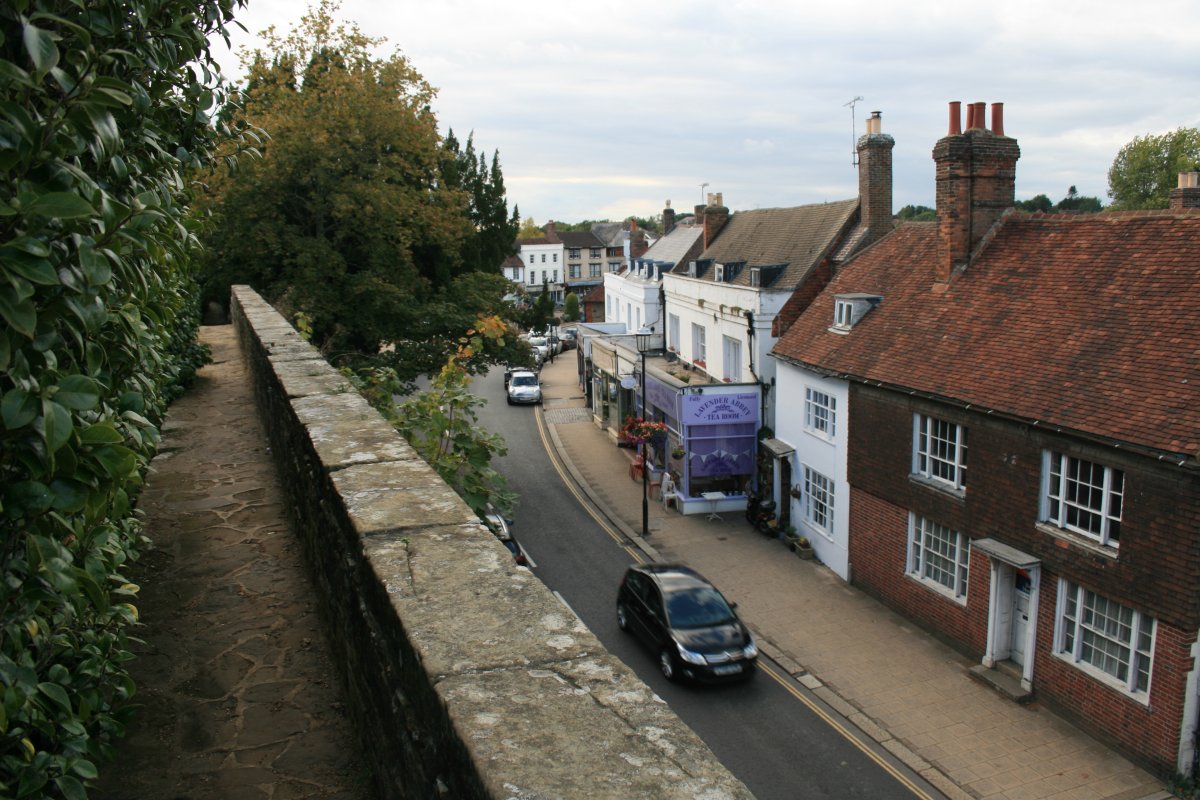 |
|
| The modern Abbey is on the grounds and is some sort of school. |
| |
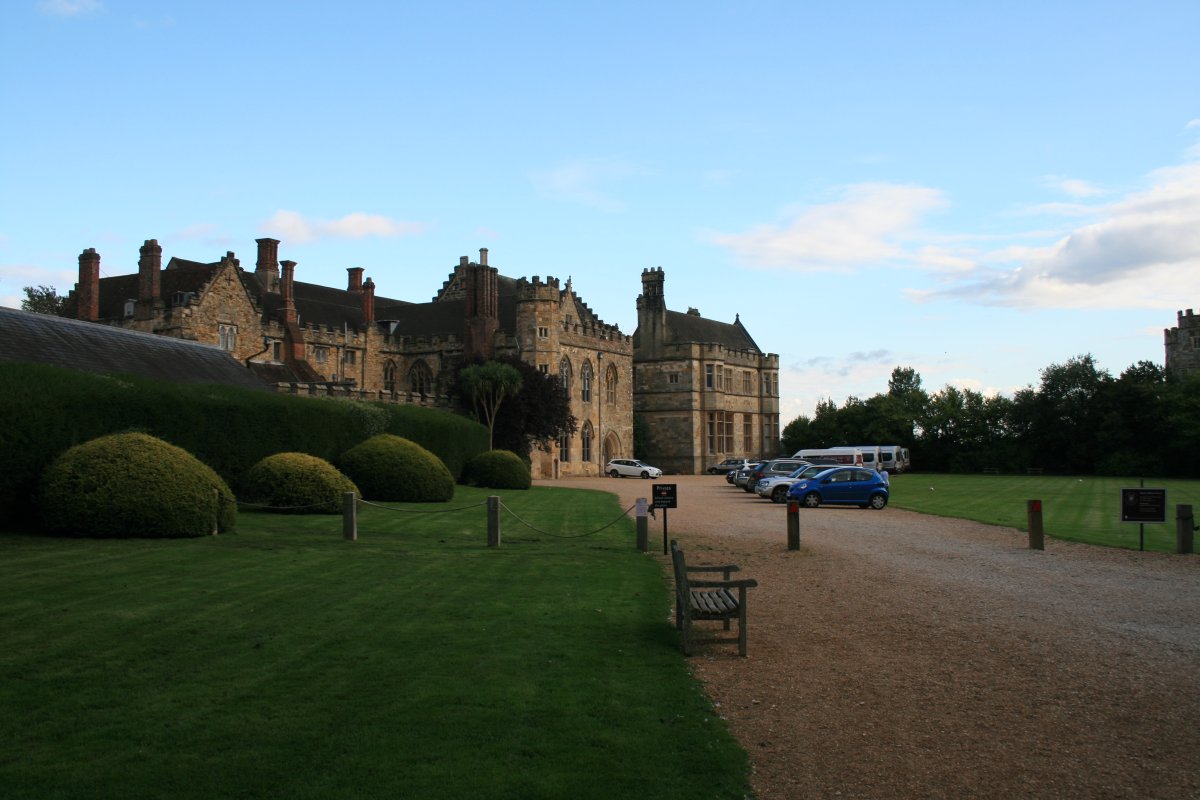 |
|
| A better look at the town of Battle. There is a Battle Museum in town which I didn't know about at the time but wish I had had a chance to visit now. |
| |
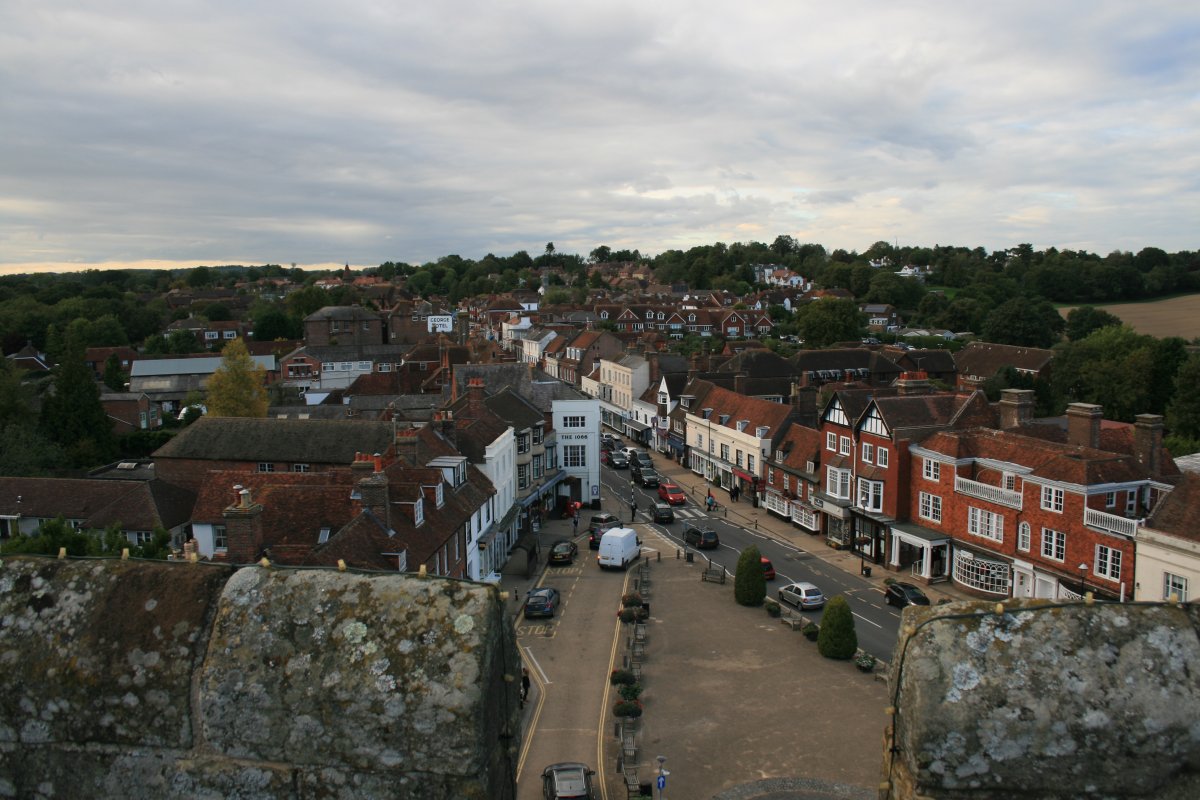 |
|
|
A better look at the Abbey School.
|
| |
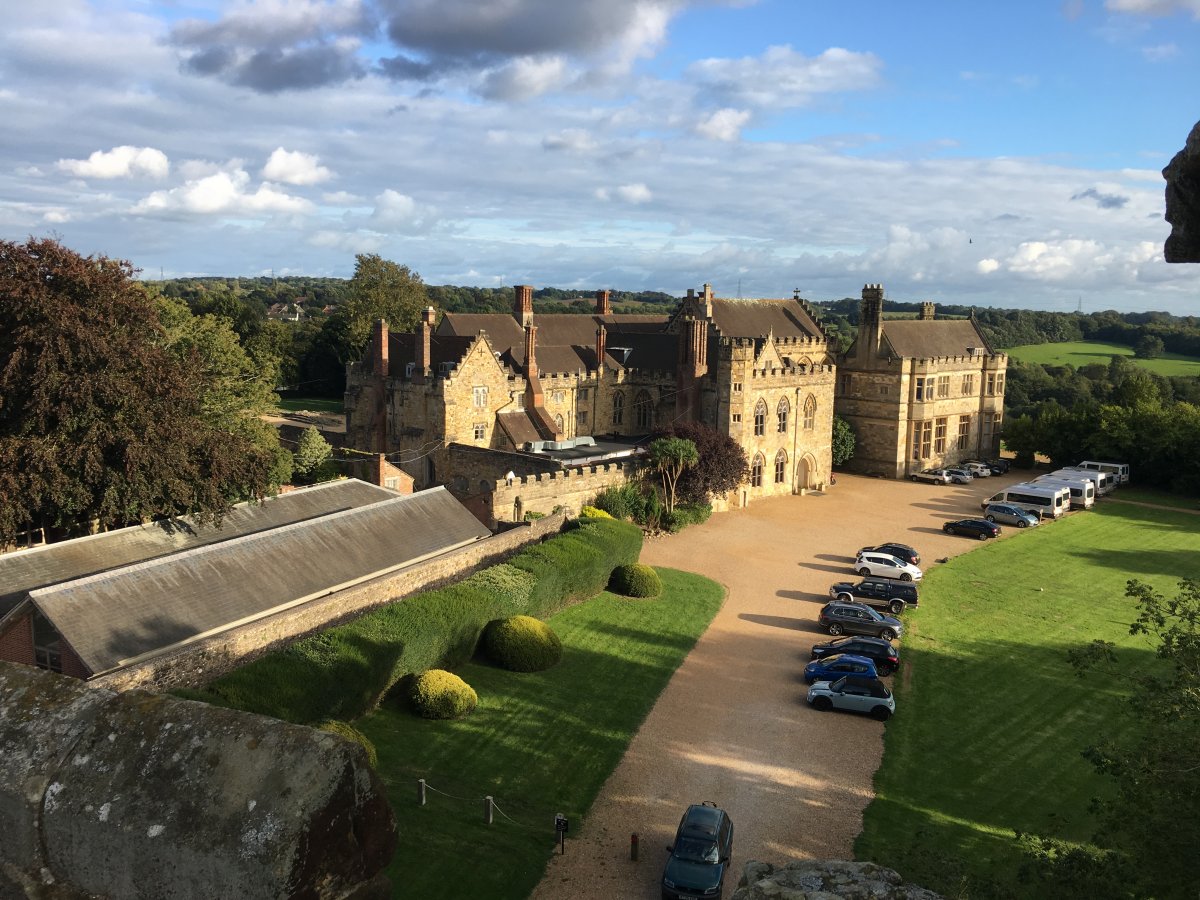 |
|
| |
| |
|
|
|
|
|
|



















